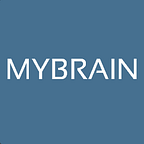Cannabis and The Brain. The Good, Bad, and The Unknown
Two recent published studies in the journal Neurology highlight the interesting intersection between science research, health care, and public policy that is playing out across the US in regards to legal cannabis (marijuana) consumption.
Neurology is the science journal of the American Academy of Neurology (AAN). AAN is the professional medical association for neurologists in the United States and has over 25,000 members. I think it’s a good thing that the AAN, with its focus on brain health research, has begun to look more closely at the uses and effects of cannabis on brain function from an objective standpoint.
So, first the good news from cannabis use for people with multiple sclerosis:
Oral Cannabis Extract (OCE) is effective for pain and muscle spasms associated with multiple sclerosis (MS).
See the study here. Unfortunately, the AAN report did not make it clear in media communications that oral cannabis extract – OCE (a processed version of the plant) is the effective MS pain agent, and *not* smoked cannabis, so many mainstream media outlets didn’t accurately report this important detail.
Another key point is that oral cannabis extract typically contains more cannabidiol (CBD) than tetrahydrocannabinol (THC). CBD is an antioxidant with neuroprotective properties, THC is the main psychoactive “mind altering” agent in cannabis.
Now on to the bad news from a second study on cannabis use (at least in MS patients):
Patients with MS who routinely smoke cannabis are more cognitively impaired than nonuser MS patients. Additionally, the MS patients who smoke cannabis showed significant functional brain abnormalities compared to nonuser MS patients, as recorded by MRI brain scans:
This is one of the first studies to combine neurocognitive testing, with functional MRI with smoked cannabis use. The fact that there were functional changes on the MRI scans between the two groups is significant. However, it’s unclear how much of these results can be generalized to healthy adults without any neurological conditions.
Another recent brain imaging study in the Journal of Neuroscience identified physical, measurable changes in the brains of young adults who habitually smoked cannabis. Two important brain regions involved in motivation and reward, the amygdala and nucleus accumbens, were found to have changed both in size and shape in habitual cannabis users compared to controls.
There are many unknowns with these recent studies on the interaction between cannabis use, brain health, and treating neurological conditions such as MS. For example, how does dosage of smoked cannabis impact brain health – including the ratio between CBD and THC? Out of the 60+ active agents in cannabis, which ones are responsible for the anatomical and functional brain changes in habitual users of smoked cannabis? Much more work needs to be done in this area.
Bottom line: Habitual use of many psychoactive substances may cause physical changes in brain regions, as part of a use-feedback loop. The possible behavioral changes (both positive and negative) brought on by these functional changes in brain network organization and activity is unclear. Proceed with caution.
Published at www.mybraintest.org
See also: Alcohol is Your Brain’s Frenemy
